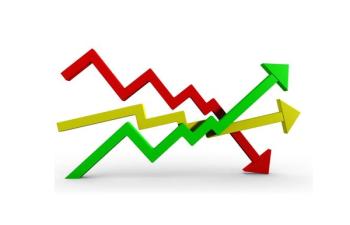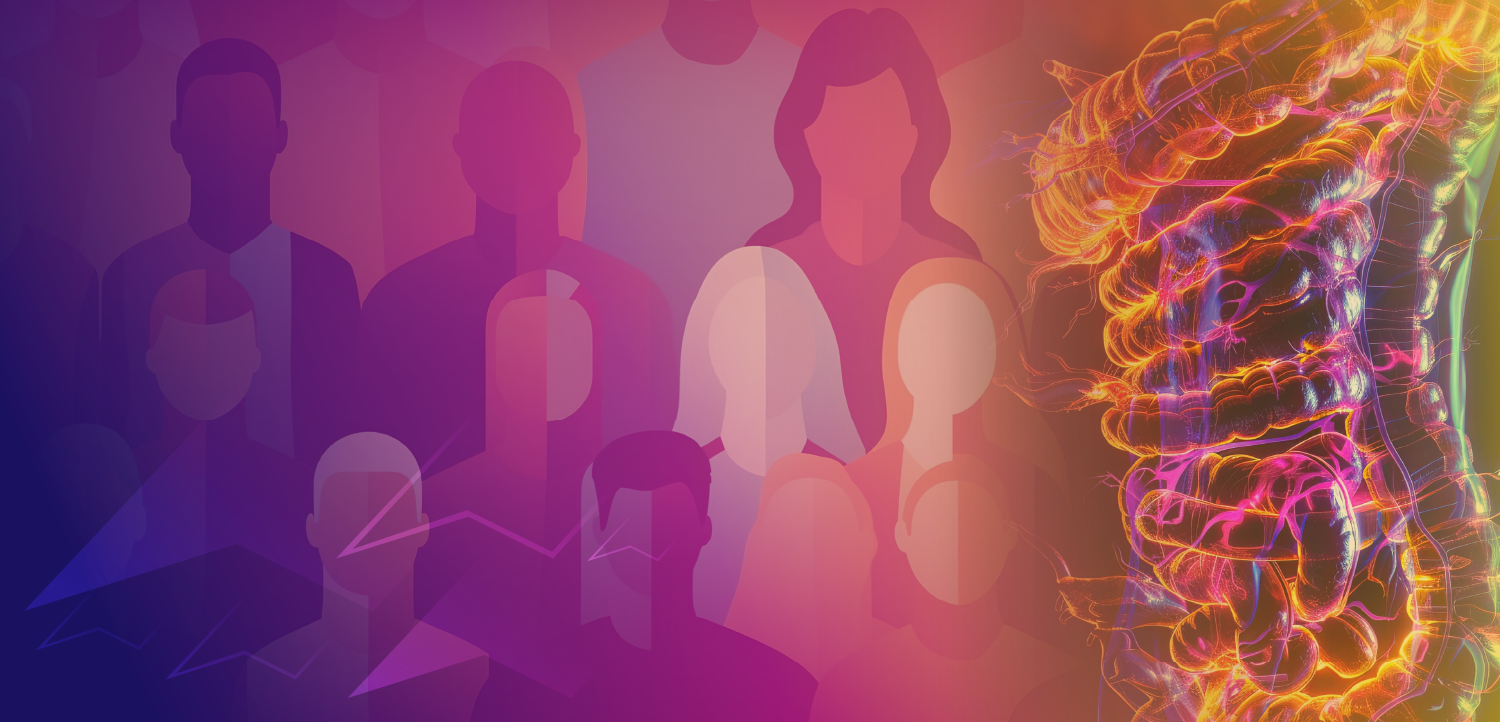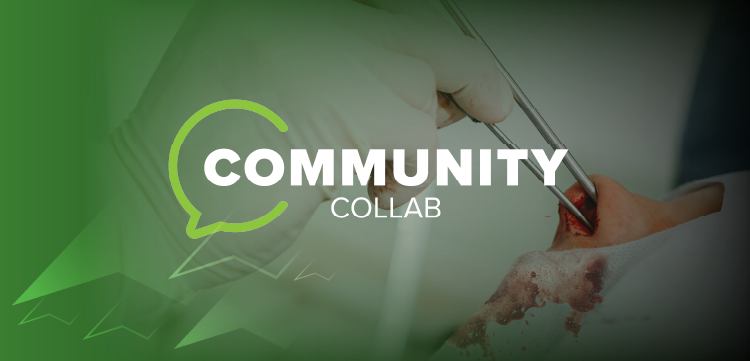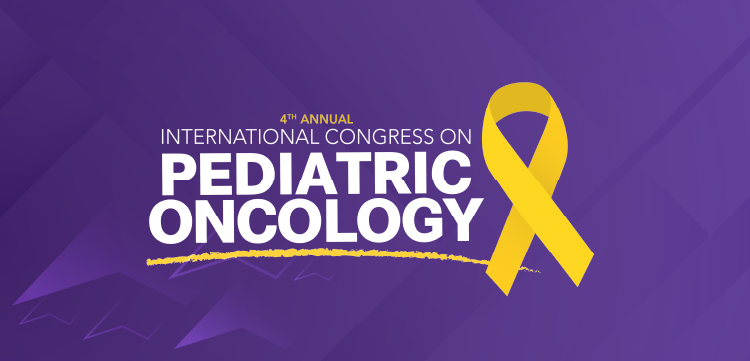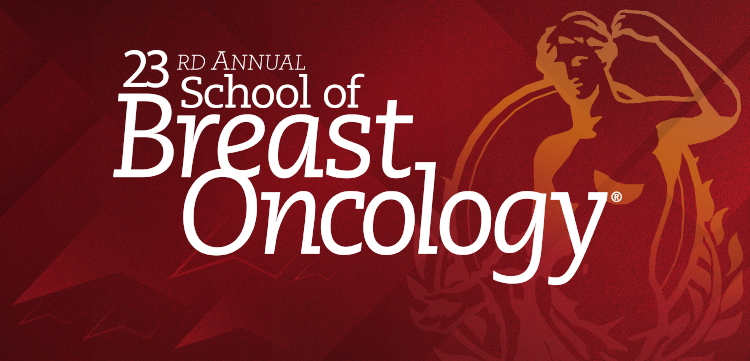
Migraine:
ABSTRACT: Consider prophylactic therapy for patients with frequent (5 or more per month), severe migraine attacks; commonly used agents include β-blockers, calcium channel blockers, antidepressants, and antiepileptic agents. Daily or alternate-day use of aspirin or an NSAID may also be helpful, and limited data suggest angiotensin II receptor blockers may provide effective migraine prophylaxis. For treatment of acute migraine attacks, triptans have emerged as the most effective agents. Controlled clinical trials have demonstrated that all the triptans have similar efficacy. The optimal strategy for an acute migraine attack is to initially administer a therapeutic agent at a dose sufficient to relieve symptoms. Intervention during the early, mild stages of an attack is more likely to alleviate pain than intervention after moderate to severe symptoms occur.
An estimated 28 million Americans have migraine.1 The disorder affects 1 of 9 adults, approximately two thirds of whom are women.2 Many migraineurs do not seek professional treatment, or they rely solely on over-the-counter (OTC) remedies; therefore, their migraines may be undiagnosed and/or inadequately treated.1
Most migraine attacks produce at least temporary disability despite self-management efforts. Poorly controlled migraine may be extremely disabling and frequently disrupts personal and work-related activities. About 25% of employed migraineurs report that their career development has been impeded by migraine.3
In this article, I briefly review the pathophysiology of migraine to set the stage for a discussion of the most effective pharmacologic strategies for prevention and treatment.
PATHOPHYSIOLOGY
A number of mechanisms are involved in the pathophysiology of migraine.4-8 Triggers such as stress or trauma, odors, changes in sleep pattern, or specific foods or drugs activate the trigeminovascular system. Trigeminal neurons release vasodilatory and inflammatory neuropeptides; calcitonin gene-related peptide (CGRP) appears to be the most important neuropeptide in migraine. Intracranial vessel dilation and protein extravasation in the dura mater result in neurogenic inflammation that further activates the trigeminocervical complex, which sends signals to higher pain centers.
Along with the release of CGRP, decreased serotonergic neural transmission has been implicated in the pathophysiology of migraine.4,8,9 Serotonin (5-HT) regulates the vascular smooth muscle tone of meningeal blood vessels via 5-HT1B receptors, the activation of which causes vasoconstriction. In addition, 5-HT has inhibitory effects on trigeminal nerves that synapse onto the dural vessels and brain stem trigeminal nuclei via the 5-HT1D receptor.8 Further support for this model is provided by magnoencephalographic imaging, which reveals brain stem activity in patients who are having migraine attacks. This pattern of activity is absent in those who have non-migraine headache. The trigeminal nerve and other cervical nerves are thought to stimulate the vascular reaction of migraine.10
During migraine, mechanosensitive nociceptors in the dura become hypersensitive to intracranial mechanical disturbances. This may exacerbate migraine pain during physical activities.11 Sensitization of central trigeminal afferents (ie, second-order trigeminal neurons) can also occur during migraine.12,13 Cutaneous allodynia involving the side of the head ipsilateral to the headache side in migraine may be a manifestation of central trigeminal hypersensitivity. In one study, more than three quarters of migraineurs demonstrated ipsilateral cutaneous allodynia during a migraine attack.13
Among patients who experience disabling migraine, as defined by the International Headache Society,14 the entire spectrum of headaches (including episodic tension-type headache and migrainous headache) responds to a serotonin-1 (5-HT1) agonist (triptan).15,16 This suggests that common biologic mechanisms may underlie migraine and tension-type headaches in migraineurs. These headaches, although differentiated clinically, may be manifestations of a shared pathophysiology.17
PROPHYLAXIS
Consider prophylactic treatment for patients with frequent, severe migraine attacks for whom abortive therapy is ineffective, contraindicated, or intolerable.7,18 Signs of inadequate abortive therapy include insufficient pain relief and rebound headache.
Increasing frequency of migraine may also indicate a need for preventive therapy. Goadsby and colleagues7 suggest that preventive therapy should be considered for patients who suffer 3 or 4 migraine attacks per month. Preventive therapy is recommended for patients with 5 or more attacks per month.
Most drugs used in migraine prophylaxis were originally developed for other indications and are therefore not necessarily specific for migraine.18,19 Some of these agents may still be under investigation.
β-Blockers. Originally developed for angina, arterial rhythm disorders, and hypertension,20 β-adrenergic blockers-such as long-acting propranolol (80 to 240 mg/d in divided doses),nadolol (40 to 80 mg/d), atenolol (50 to 100 mg/d or bid), metoprolol (50 to 100 mg bid), and timolol (5 to 30 mg/d)-are also frequently used for migraine prophylaxis. The mechanism of action of β-blockers in migraine prophylaxis is unknown; hypotheses include inhibition of central β-receptors, modulation of 5-HT receptor activity, and cross-regulation of serotonergic pathways.18 β-Blockers may exacerbate depression and should not be used to treat migraine in patients with depressive symptoms. They are contraindicated in patients with asthma.
Calcium channel blockers. A variety of mechanisms by which these agents might prevent migraine have been postulated. Three small double-blind studies found that verapamil, 120 to 480 mg/d, was significantly more effective than placebo for migraine prophylaxis.21 Placebo-controlled trials of nimodipine have yielded conflicting results.22-25 Nifedipine is not significantly more effective than placebo.26,27
Angiotensin II receptor blockers. Limited data suggest that these agents might be effective for migraine prophylaxis. A recent randomized, double-blind crossover study found that treatment with candesartan, 16 mg/d, was associated with significantly better outcomes than placebo on the outcome measures of days and hours with migraine (P = .001). Adverse events were similar in the candesartan and placebo groups.28 Further studies are needed to confirm these results.
Antidepressants. Antidepressants that prevent migraine are those that antagonize 5-HT2 receptors.29 In clinical trials of migraine prophylaxis, amitriptyline, a sedating tricyclic antidepressant (TCA), demonstrated significantly greater efficacy than placebo and efficacy comparable to or greater than that of propranolol.19,30-32 The recommended dosages of amitriptyline and nortriptyline are 10 to 100 mg qhs.
Nonsedating antidepressants, such as protriptyline and desipramine, have been used; however, their efficacy has not been established in clinical trials. Recommended dosages of desipramine are 10 to 100 mg qhs; recommended dosages of protriptyline are 5 to 15 mg qhs.
Because of the complex pharmacologic properties of the TCAs, tolerability has been an important concern. These agents have been associated with a wide variety of side effects, including muscarinic, antihistaminergic, and adrenergic effects.18 Selective serotonin reuptake inhibitors (SSRIs) are generally better tolerated than the TCAs33; however, only fluoxetine has shown efficacy (albeit modest) in a small number of clinical trials of migraine prophylaxis.19
Limited data from an open-label study suggest that the monoamine oxidase inhibitor (MAOI) phenelzine may be effective in preventing migraine.34 Use of an MAOI requires dietary restriction (avoidance of foods high in tyramine) and avoidance of medications with indirectly acting sympathomimetic properties because of the risk of hypertensive and hyperpyretic crises.35,36
Antiepileptic agents. Divalproex, gabapentin, and topiramate are among the antiepileptic agents that have been found effective in migraine prophylaxis.18,19,37 How these agents prevent migraine is not yet clear; one possible mechanism involves the inhibition of nociceptive transmission through trigeminal pathways via modulation of the effects of gamma;-amino benzoic acid-mediated neural activity.38 These agents should be initiated at low dosages because of the frequency of adverse effects. Because the dosage must be increased gradually, there may be some delay in achieving efficacy.
The efficacy of divalproex, 250 to 1500 mg/d, in migraine prevention was studied in 2 double-blind trials, both of which reported that significantlymore patients who received divalproex had a 50% or greater reduction in headache frequency than those who received placebo (P < .001; P ≤ .05).39 Commonly reported adverse events with divalproex included asthenia, back pain, nonspecific pain, infection, diarrhea, dyspepsia, nausea, vomiting, dizziness, somnolence, tremor, and weight gain. Divalproex may produce teratogenic effects and should be used with caution in women of childbearing potential.
Gabapentin, 900 to 2400 mg/d, was assessed in a double-blind trial that showed that more patients who took gabapentin achieved a 50% or greater reduction in headache frequency than those in the placebo group (46.4% vs 16.1%).40 Adverse effects included somnolence, dizziness, and asthenia.
Topiramate, up to 200 mg/d, was evaluated in 2 large double-blind trials. One trial showed that significantly more patients in the topiramate group had half the headache frequency compared with the placebo group (P < .05 for the 50 mg/d arm, and P < .001 for the 100 and 200 mg/d arms).41 The other trial found a significantly greater mean reduction in headache frequency with topiramate compared with placebo (P = .008 for the 100 mg/d arm, and P < .001 for the 200 mg/d arm).42 Statistically significant reduction (P < .05) occurred within the first month with topiramate, 100 or 200 mg/d. Adverse effects associated with topiramate included paresthesias, diarrhea, somnolence, altered taste, diminished appetite, and weight loss.41,42
Analgesics and NSAIDs. Aspirin has been associated with modest but significant reductions in headache frequency. One study showed a decrease of 30% with a dosage of 500 mg/d compared with no treatment.43 Another study showed a reduction of 20% with a dosage of 325 mg every other day compared with placebo.44 Naproxen has also been found significantly more effective than placebo in migraine prophylaxis.45,46 Prophylactic use of NSAIDs rarely causes rebound headache.
ABORTIVE TREATMENT
The goals of pharmacologic therapy for acute migraine are:
To relieve pain and migraine-associated symptoms, such as nausea, vomiting, photophobia, and phonophobia.
To restore function.
To improve the patient's quality of life.
Analgesics and NSAIDs. Nonspecific abortive therapy for migraine includes analgesics and NSAIDs, alone or in combination with caffeine. The combination of acetaminophen, 500 mg; aspirin, 500 mg; and caffeine, 130 mg, reduces migraine pain intensity and increases the proportion of migraineurs who are pain-free 6 hours after dosing significantly more than placebo.47
Ibuprofen and naproxen also relieve migraine pain more than placebo.48-51 Antiemetic drugs, which facilitate intestinal absorption, can enhance the response to analgesic therapy.7 However, regular use of analgesics and, to a lesser extent, NSAIDs may result in rebound headache.52,53 Opiates also may provide pain relief but should be used with caution because of possible cognitive impairment and the potential for addiction.7 They are best avoided in patients with comorbid depression.
Ergot derivatives. Ergotamine is more specific to migraine than analgesics. The ergot derivatives have a long history of use for the acute treatment of migraine.54,55 These agents were first used in clinical practice before controlled trial testing was required for drug approval. Accumulated trial data for oral ergotamine suggest efficacy for the acute treatment of migraine, but other formulations (intranasal, rectal) have not been adequately assessed54 and are no longer available in the United States.10
Dihydroergotamine has been used for more than 50 years as an effective abortive therapy for migraine. It is available in intravenous, intramuscular, and intranasal formulations. Limited clinical trial data support the efficacy of dihydroergotamine.55
Effective dosing with ergot derivatives is difficult because the pharmacokinetics are variable, owing to individual differences in first-pass metabolism.54 These agents have relatively nonspecific pharmacology, with affinity for multiple subtypes of serotonin, dopamine, and noradrenaline receptors. Ergot alkaloids have generalized vasoconstrictor effects and have been associated with a high risk of overuse and rebound headache.
Patients who may benefit from ergot therapy include those with infrequent or lengthy migraine attacks.54,55 Ergot derivatives are contraindicated in pregnant women and in persons with coronary heart disease, peripheral vascular disease, uncontrolled hypertension, a history of stroke, renal or hepatic impairment, or sepsis.54 They are also not recommended for patients with prolonged aura, familial hemiplegic migraine, or basal migraine.54
Triptans. Although ergot derivatives are effective, their variable pharmacokinetics, restrictions in patients with comorbid conditions, and side effects limit their usefulness. Triptans, on the other hand, have emerged as the most specific and effective agents for acute migraine. Their selective pharmacology, consistent pharmacokinetics, and established efficacy based on well-designed controlled trials offer numerous therapeutic advantages.7,56 They are well tolerated by most patients.
All of the triptans are potent 5-HT1B/1D agonists. Although subtle variations may be discerned in the pharmacokinetics (Table 1), metabolism, and elimination routes-and although the influence of these metabolic pathways on the potential for drug interactions may vary-there have been no significant differences in their demonstrated efficacy against migraine in controlled clinical trials.
Triptans have 3 possible mechanisms of action: cranial vasoconstriction; inhibition of peripheral trigeminal activation; and inhibition of the activity of the second-order neurons of the trigeminocervical system.7,9 The first triptan specifically developed for acute migraine therapy use in clinical practice was sumatriptan. Six additional triptans, in order of development, are available: zolmitriptan, naratriptan, rizatriptan, almotriptan, frovatriptan, and eletriptan. The recommended dosages are listed in Table 2.
All triptans are available in an oral formulation (preferred by most patients57) and also in subcutaneous and intranasal forms for migraineurs with GI disorders who may be unable to take oral medications. During migraine attacks, the oral absorption of many drugs is delayed, which makes other formulations desirable.7
Many patients who use triptans take other medications as well, so the potential for drug interactions exists.58 Because triptans are associated with coronary vasoconstriction (narrowing by about 10% to 20%), the primary concern is the possibility of synergistic vasoconstriction.59 For this reason, triptans and ergot alkaloids or ergot-containing agents should not be used within 24 hours of each other. In addition, triptans are not recommended for patients with cardiovascular or cerebrovascular disease. Concomitant use of a mild vasoconstrictor such as caffeine, however, is acceptable.
The triptans are equally safe but may differ in tolerability. The most frequent side effects are tingling, paresthesias, and sensations of warmth in the head, neck, chest, and limbs. There is a risk of rebound headache if triptans are used more than twice a week.
The concomitant use of a triptan and an SSRI carries the potential risk for the serotonin syndrome, which consists of altered mental state, dysautonomia, and altered neuromuscular function.60 However, the absolute risk of this syndrome is believed to be low. In a 1-year study of 1784 patients taking SSRIs and subcutaneous sumatriptan, there were no cases of the serotonin syndrome.58 If propranolol or another β-blocker is used in conjunction with rizatriptan, the rizatriptan dosage should be reduced by 50%.
TREATMENT STRATEGIES IN ABORTIVE THERAPY
Treatment strategies for abortive drug therapy for migraine include stepped care-either across attacks or within attacks-and stratified care.61
Stepped care is defined as initial treatment at a minimal level of intervention followed by increased therapeutic strategies during the same episode ("within attacks") or subsequent episodes ("across attacks") when previous therapy has proved ineffective or unsatisfactory.
Stratified care refers to the administration of therapeutic agents in sufficient strength to address the immediate severity of the symptoms in conjunction with the level of pain expressed by the patient.
The efficacy of stratified versus stepped management was compared in a randomized study of 835 adult migraineurs during 6 migraine attacks.61 In the stratified-care group, patients with less severe headache received aspirin, 800 to 1000 mg, plus metoclopramide, 10 mg. Patients with more severe headache received zolmitriptan, 2.5 mg.
The stepped-care process used the same initial therapy for all patients (aspirin plus metoclopramide), but patients who did not obtain adequate relief received zolmitriptan, either during the same attack or during the next 3 attacks. The stratified-care approach provided significantly greater headache response at 2 hours and significantly less disability time than stepped care within and across attacks (P < .001).
Early intervention. Another important issue in designing a strategy for acute migraine therapy is the headache severity level at which treatment is initiated. Nearly all triptan studies have required patients to delay using the test agent until headache pain was of moderate intensity, so data on the early use of triptans are limited.62 However, retrospective analyses of data from patients who violated the study protocol by using sumatriptan, 100 mg, during mild migraine attacks found that this intervention was associated not only with a greater 2-hour pain-free rate than ergotamine plus caffeine or aspirin plus metoclopramide, but was also associated with a greater pain-free response than treatment of moderate to severe migraine attacks.63
Similarly, 2 separate post hoc analyses of data from studies in which patients received almotriptan, 12.5 mg, for migraine attacks showed that treatment of mild migraine was associated with significantly greater 1- and 2-hour pain-free rates (P < .001 in both studies); a significantly lower rate of rescue medication use (P < .01; P < .001); and a significantly reduced rate of headache recurrence compared with treatment of moderate or severe migraine (P < .01; P < .001).64,65 A meta-analysis of 53 trials found that the rate of relief was significantly higher for mild attacks than for moderate to severe attacks (P < .001).66
In a prospective study of nearly 2000 migraineurs with 3450 migraine attack episodes who used rizatriptan either at the first sign of migraine or when the headache became moderate to severe, early use of rizatriptan was associated with significantly greater odds of pain relief by 30 minutes after dosing, and freedom from symptoms and resumption of normal activities by 1 hour after dosing.67
As a result of these findings, the strategy of using triptans during the mild phase of a migraine attack has gained increased support.62,63,67,68
Although it is beyond the scope of this article to describe in detail the predominant phases of migraine, the Figure graphically summarizes many of the pharmacologic therapies available for treatment of acute migraine. No known agents can effectively alleviate migraine aura; however, triptans, OTC products-including aspirin, acetaminophen, and caffeine-and NSAIDs, whether alone or in combination, may relieve all other migrainous symptoms. n
References:
REFERENCES:
1. Lipton RB, Diamond M, Stewart WF, et al. Prevalence and burden of migraine in the United States: data from the American Migraine Study II. Headache. 2001;41:646-657.
2. Stewart WF, Simon D, Shechter A, Lipton RB. Population variation in migraine prevalence: a meta-analysis. J Clin Epidemiol. 1995;48:269-280.
3. Stang P, Von Korff M, Galer BS. Reduced labor
force participation among primary care patients with headache. J Gen Intern Med. 1998;13:296-302.
4. Goadsby PJ. Serotonin receptors and the acute attack of migraine. Clin Neurosci. 1998;5:18-23.
5. Hargreaves RJ, Shepheard SL. Pathophysiology of migraine-new insights. Can J Neurol Sci. 1999;26
(suppl 3):S12-S19.
6. Tfelt-Hansen P, De Vries P, Saxena PR. Triptans in migraine: a comparative review of pharmacology, pharmacokinetics and efficacy. Drugs. 2000;60: 1259-1287.
7. Goadsby PJ, Lipton RB, Ferrari MD. Migraine-current understanding and treatment. N Engl J Med. 2002;346:257-270.
8. Tepper SJ, Rapoport AM, Sheftell FD. Mechanisms of action of the 5-HT1B/1D receptor agonists. Arch Neurol. 2002;59:1084-1088.
9. Goadsby PJ. The pharmacology of headache. Prog Neurobiol. 2000;62:509-525.
10. Diamond S. Diagnosing and Managing Headache. 3rd ed. Chicago: Professional Communications, Inc; 2001.
11. Strassman AM, Raymond SA, Burstein R. Sensitization of meningeal sensory neurons and the origin of headaches. Nature. 1996;384:560-564.
12. Burstein R, Cutrer MF, Yarnitsky D. The development of cutaneous allodynia during a migraine attack: clinical evidence for the sequential recruitment of spinal and supraspinal nociceptive neurons in migraine. Brain. 2000;123:1703-1709.
13. Burstein R, Yarnitsky D, Goor-Aryeh I, et al. An association between migraine and cutaneous allodynia. Ann Neurol. 2000;47:614-624.
14. Ad Hoc Committee. Classification of headache. JAMA. 1962;6:717.
15. Cady RK, Gutterman D, Saiers J, Beach ME. Responsiveness of non-IHS migraine and tension-type headache to sumatriptan. Cephalalgia. 1997;17: 588-590.
16. Lipton RB, Stewart WF, Cady RK, et al. Sumatriptan for the range of headaches in migraine sufferers: results of the spectrum study. Headache. 2000;40:783-791.
17. Bedell AW, Cady RK, Diamond ML, et al. Patient-centered strategies for effective management of migraine. Primary Care Network. 2000.
18. Silberstein SD, Goadsby PJ. Migraine: preventive treatment. Cephalalgia. 2002;22:491-512.
19. Silberstein SD. Practice parameter: evidence-based guidelines for migraine headache (an evidence-based review): report of the Quality Standards Subcommittee of the American Academy of Neurology. Neurology. 2000;55:754-762.
20. Menghini P. The role of beta-blocker therapy in the treatment of arterial hypertension. Available at: www.grmer.ch/TMCAM/Hypertension/beta- blocker_therapy_arterial_hypertension. Accessed December 2, 2003.
21. Solomon GD. Verapamil in migraine prophylaxis-a five-year review. Headache. 1989;29:425-427.
22. Gelmers HJ. Nimodipine, a new calcium antagonist, in the prophylactic treatment of migraine. Headache. 1983;23:106-109.
23. Havanka-Kanniainen H, Hokkaned E, Myllyla VV. Efficacy of nimodipine in the prophylaxis of migraine. Cephalalgia. 1985;5:39-43.
24. Ansell E, Fazzone T, Festenstein R, et al. Nimodipine in migraine prophylaxis. Cephalalgia. 1988;8: 269-272.
25. European multicenter trial of nimodipine in the prophylaxis of common migraine (migraine without aura). Migraine-Nimodipine European Study Group (MINES). Headache. 1989;29:633-638.
26. McArthur JC, Marek K, Pestronk A, et al. Nifedipine in the prophylaxis of classic migraine: a crossover, double-masked, placebo-controlled study
of headache frequency and side effects. Neurology.
1989;39:284-286.
27. Shukla R, Garg RK, Nag D, Ahuja RC. Nifedipine in migraine and tension headache: a randomised double blind crossover study. J Assoc Physicians India. 1995;43:770-772.
28. Tronvik E, Stovner LJ, Helde G, et al. Prophy-
lactic treatment of migraine with an angiotensin II receptor blocker: a randomized controlled trial. JAMA. 2003;289:65-69.
29. Richelson E. Antidepressants and brain neurochemistry. Mayo Clin Proc. 1990;65:1227-1236.
30. Couch JR, Hassanein RS. Amitriptyline in migraine prophylaxis. Arch Neurol. 1979;36: 695-699.
31. Ziegler DK, Hurwitz A, Presdorn S, et al. Propranolol and amitriptyline in prophylaxis of migraine. Pharmacokinetic and therapeutic effects. Arch Neurol. 1993;50:825-830.
32. Ziegler DK, Hurwitz A, Hassanein RS, et al. Migraine prophylaxis. A comparison of propranolol and amitriptyline. Arch Neurol. 1987;44:486-489.
33. Mace S, Taylor D. Selective serotonin reuptake inhibitors: a review of efficacy and tolerability in depression. Expert Opin Pharmacother. 2000;1:917-933.
34. Anthony M, Lance JW. Monoamine oxidase inhibition in the treatment of migraine. Arch Neurol. 1969;21:263-268.
35. Brown CS, Bryant SG. Monoamine oxidase inhibitors: safety and efficacy issues. Drug Intell Clin Pharm. 1988;22:232-235.
36. Lippman SB, Nash K. Monoamine oxidase inhibitor update. Potential adverse food and drug interactions. Drug Saf. 1990;5:195-204.
37. Mathew NT. Antiepileptic drugs in migraine prevention. Headache. 2001;41(suppl 1):S18-S24.
38. Cutrer FM. Antiepileptic drugs: how they work in headache. Headache. 2001;41(suppl 1):S3-S10.
39. Mathew NT, Saper JR, Silberstein SD, et al. Migraine prophylaxis with divalproex. Arch Neurol. 1995;52:281-286.
40. Mathew NT, Rapoport A, Saper J, et al. Efficacy
of gabapentin in migraine prophylaxis. Headache. 2001;41:119-128.
41. Mathew NT, Schmit TJ, Neto W, Jacobs D. Topiramate in migraine prevention: MIGR-001. Neurology. 2003;60(suppl A):336.
42. Brandes JL, Saper JR, Diamond M, et al, for the MIGR-002 study group. Topiramate for migraine prevention: a randomized controlled trial. JAMA. 2004;291:965-973.
43. Peto R, Gray R, Collins R, et al. Randomised trial of prophylactic daily aspirin in British male doctors. Br Med J (Clin Res Ed). 1988;296:313-316.
44. Buring JE, Peto R, Hennedens CH. Low-dose aspirin for migraine prophylaxis. JAMA. 1990;264: 1711-1713.
45. Welch KM, Ellis DJ, Kennan PA. Successful migraine prophylaxis with naproxen sodium. Neurology. 1985;35:1304-1310.
46. Bellavance AJ, Meloche JP. A comparative study of naproxen sodium, pizotyline and placebo in migraine prophylaxis. Headache. 1990;30:710-715.
47. Lipton RB, Stewart WF, Ryan RE Jr, et al. Efficacy and safety of acetaminophen, aspirin, and caffeine in alleviating migraine headache pain: three double-blind, randomized, placebo-controlled trials. Arch Neurol. 1998;55:210-217.
48. Havanka-Kanniainen H. Treatment of acute migraine attack: ibuprofen and placebo compared. Headache. 1989;29:507-509.
49. Kloster R, Nestvold K, Vilming ST. A double-blind study of ibuprofen versus placebo in the treatment of acute migraine attacks. Cephalalgia. 1992;12: 169-171; discussion, 128.
50. Andersson PG, Hinge HH, Hohansen O, et al.
Double-blind study of naproxen vs placebo in the
treatment of acute migraine attacks. Cephalalgia.
1989;9:29-32.
51. Treves TA, Streiffler M, Korczyn AD. Naproxen sodium versus ergotamine tartrate in the treatment of acute migraine attacks. Headache. 1992;32:280-282.
52. Tepper SJ. Debate: analgesic overuse is a cause, not consequence, of chronic daily headache. Analgesic overuse is a cause of chronic daily headache. Headache. 2002;42:543-547.
53. Bahra A, Walsh M, Menon S, Goadsby PJ. Does chronic daily headache arise de novo in association with regular use of analgesics? Headache. 2003;43:179-190.
54. Tfelt-Hansen P, Saxena PR, Dahlof C, et al. Ergotamine in the acute treatment of migraine: a review and European consensus. Brain. 2000;123:9-18.
55. Bigal ME, Tepper SJ. Ergotamine and dihydroergotamine: a review. Curr Pain Headache Rep. 2003; 7:55-62.
56. Silberstein SD, Saper JR, Freitag FG. Migraine: diagnosis and treatment. In: Silberstein SD, Lipton RB, Dalessio DJ, eds. Wolff's Headache and Other Head Pain. 7th ed. New York: Oxford University Press; 2001:165-172.
57. Lipton RB, Stewart WF. Acute migraine therapy: do doctors understand what patients with migraine want from therapy? Headache. 1999;39(suppl 2): S20-S26.
58. Putnam GP, O'Quinn S, Bolden-Watson CP, et al. Migraine polypharmacy and the tolerability of sumatriptan: a large-scale, prospective study. Cephalalgia. 1999;19:668-675.
59. Tepper SJ. Safety and rational use of the triptans. Med Clin North Am. 2001;85:959-970.
60. Weiner AL, Tilden FF Jr, McKay CA Jr. Serotonin syndrome: case report and review of the literature. Conn Med. 1997;61:712-721.
61. Lipton RB, Stewart WF, Stone AM, et al. Strati-
fied care vs step care strategies for migraine: the Disability in Strategies of Care (DISC) Study: a randomized trial. JAMA. 2000;284:2599-2605.
62. Schoenen J. When should triptans be taken during a migraine attack? CNS Drugs. 2001;15:583-587.
63. Cady RK, Sheftell F, Lipton RB, et al. Effect of early intervention with sumatriptan on migraine pain: retrospective analyses of data from three clinical trials. Clin Ther. 2000;22:1035-1048.
64. Pascual J, Cabarrocas X. Within-patient early versus delayed treatment of migraine attacks with almotriptan: the sooner the better. Headache. 2002; 42:28-31.
65. Mathew NT. Early intervention with almotriptan improves pain-free and sustained pain-free responses in the treatment of acute migraine. Headache. 2002; 42:28-31.
66. Ferrari MD, Goadsby PJ, Roon KI, Lipton RB. Triptans (serotonin 5-HT1B/1D agonists) in migraine: detailed results and methods of a meta-analysis of 53 trials. Cephalalgia. 2002;22:633-658.
67. Hu XH, Raskin NH, Cowan R, et al, for the United States Migraine Study Protocol (USMAP) Group. Treatment of migraine with rizatriptan: when to take the medication. Headache. 2002;42:16-20.
68. Pascual J. Clinical benefits of early triptan therapy for migraine. Headache. 2002;42(suppl 1):S10-S17.
69. Physicians' Desk Reference. 58th ed. Montvale, NJ: Thomson PDR. 2004.
70. Dahlof CG, Dodick D, Dowson AJ, Pascual J. How does almotriptan compare with other triptans? A review of data from placebo-controlled clinical trials. Headache. 2002;42:99-113.
Newsletter
Enhance your clinical practice with the Patient Care newsletter, offering the latest evidence-based guidelines, diagnostic insights, and treatment strategies for primary care physicians.

